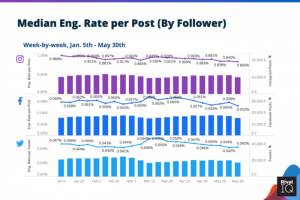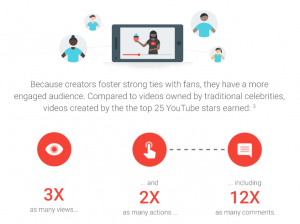A difficult problem can and will eventually become a roadblock so large that it renders forward progress in any productive way virtually impossible. The direct result of a roadblock as such is more often than not, procrastination, and the longer this problem is in place, the more you become convinced there are no solutions. This couldn’t be further from the truth.
In paying attention to the Hard Trends that will shape the future of your organization, you can be more anticipatory, not only in your disruption, but also in your method of pre-solving problems before they exist. As a matter of fact, in accordance with a concept I’ve mentioned in previous articles, you will foresee a problem that you can merely just skip. That’s right; you can skip the problems you see headed your way!
You may wonder how this is possible; how can you just skip a problem? Here are a few simple steps you can use to implement this strategy and progress into the future.
1. Your Problem isn’t the Real Problem
Often, you can’t see the real problem, because you’re blinded by what you perceive as the problem. By skipping what you perceive as the problem, you are free to discover the real problem. Perhaps your perceived problem is not having the budget to hire a large number of employees, when in reality, if you skip that problem, the real problem is finding better solutions, not a lack of staff. Forget about what you think is the problem. If that problem didn’t exist, what would be the real problem? Often the real problem and solution will surface once you eliminate the perceived problem.
2. Think in Terms of Opposites
Often, the opposite of what you perceive the problem to be is really your solution. If your problem is “saving money,” the opposite of that is “spending money.” Instead of focusing on how you can save money, try focusing on how much your company is currently spending. Focusing on the spending habits and how to either correct them or keep them in check will then automatically present the solution of saved money to you and your company.
3. Look at Technology for Help
Today’s technology is ever-expanding, and it constantly offers a wealth of new options for solving numerous problems. Can’t find a good way to effectively communicate with remote workers at your company? There are several video communication tools available today that would solve this issue. Need a way to obtain more ideas for improving your products or services? Use the plethora of social media outlets to either see what your customers are saying, or connect directly with them via surveys and inquiries. Look at what you need done and find a technological solution to automate it for you.
4. Peel the Onion
Think of any problem your company faces as the top layer of an onion. To find the real problem, you need to peel the layers back by listing the components of the problem to reveal whether or not you are working on the correct issue and ultimately toward the correct solution. In analyzing all of the components of what you perceive the problem to be, often you will find that the core issue you’re focusing on isn’t what is causing the biggest roadblock, but that, perhaps, a sub-issue that you reveal upon peeling the problem layers is truly the nucleus of your problem.
5. Focus on One Issue at a Time
Problems can be quite complex, with many corridors that lead you to a road of worry and off the path toward a solution. Even worse, sometimes the problem actually has many components working against you simultaneously, depending on your industry. Many problems are made up of multiple problems, not just one isolated incident. Separating the other problems allows you to be better at seeing and solving the real problem, the one you should focus on, when you separate it from the other problems. Don’t spread yourself too thin; take it one step at a time.
Skip to the Finish
Every problem has a solution – some better than others. By asking yourself if you can skip the problem entirely, you free your mind to look beyond the roadblock. Simultaneously, the act of skipping a problem teaches you to become more anticipatory in many other ways, especially when your problem is actually disruption heading your company’s way. Learning to pay attention to the Hard Trends shaping your industry’s future and being able to determine what is a Hard Trend versus what is a Soft Trend will also teach you how to pre-solve any problems that may come your way. Soon, having to skip a problem won’t be necessary; you’ll already have a solution before it even occurs.
Originally published here.
Business & Finance Articles on Business 2 Community
(69)
Report Post





